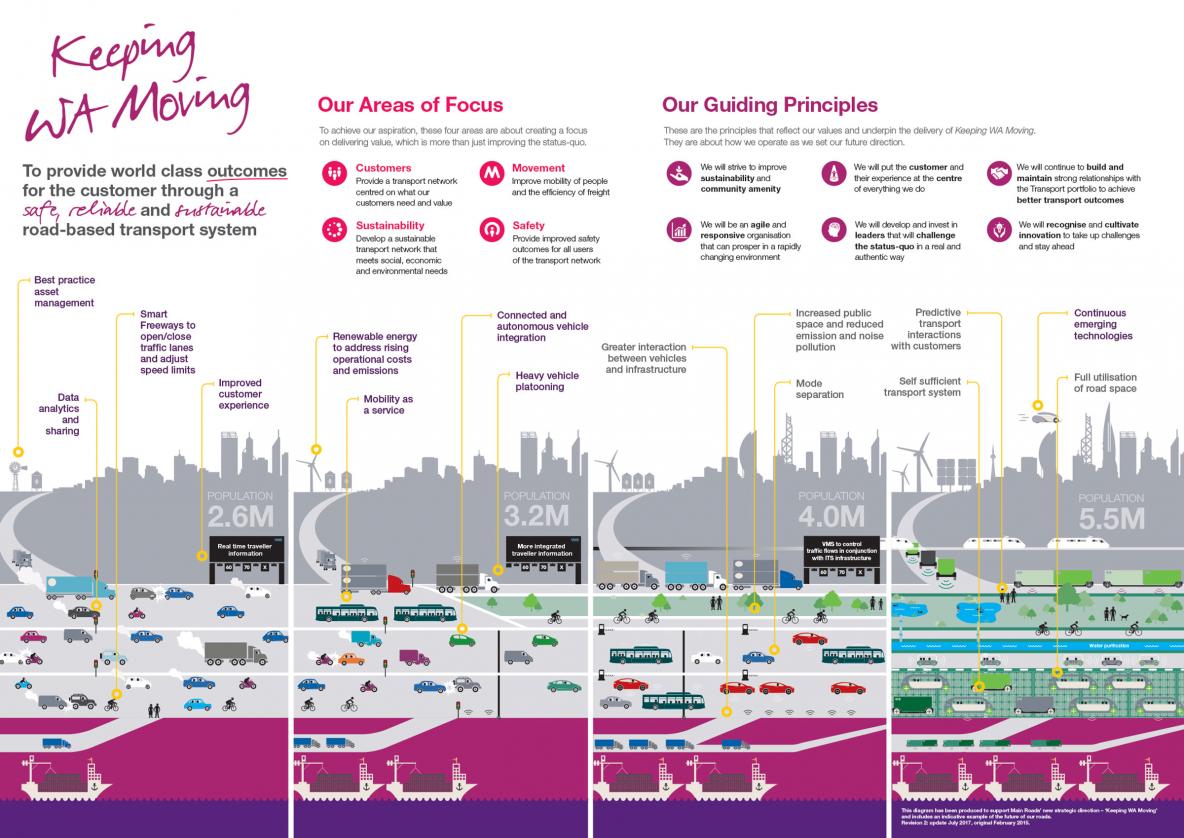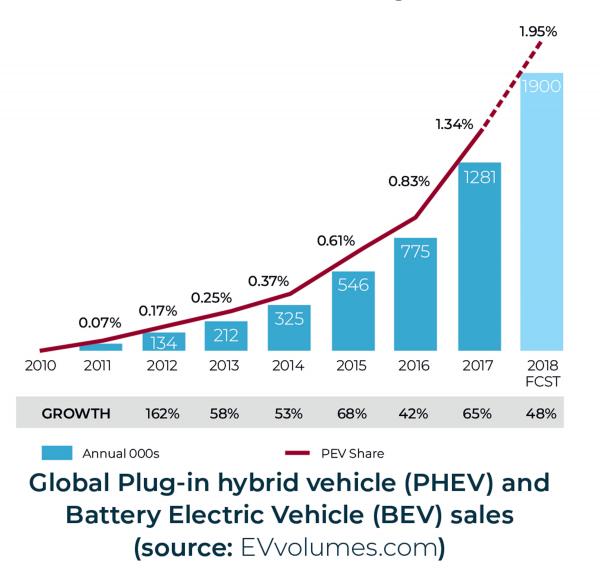Linking Strategy, Futures, Innovation and Research
Download this section (1 MB)Keeping WA Moving, our strategic direction, clearly outlines our areas of focus as Customers, Movement, Sustainability and Safety. These areas underpin what we do and help us concentrate on delivering what’s important as well as continuing to improve as an organisation.
We also scan the external environment to prepare ourselves for the future. Over the past decade, the future of transport has been re-imagined. McKinsey recently reported that US$111 billion of investments in new mobility technologies have been disclosed since 2010.
Much of this investment has come from technology companies and start-ups, new players in the transport sector. Many newer technologies are being discussed as potential solutions to existing transport problems, technologies such as:
- Electric Vehicles
- self-driving cars
- flying cars
- delivery drones
- mobility as a service
- Hyperloop high speed transit system
- machine learning / artificial intelligence
- blockchain technology.
Given the level of investment and potential new technologies, the transport industry is expecting significant disruption in coming years and we need to adapt to take advantage of opportunities and to minimise risks. These technologies give rise to many potential futures for transport and we use this understanding to inform our strategy, innovation and research activities.
Keeping WA Moving
During the year, potential futures were incorporated into our update of Keeping WA Moving. The areas shown in colour on the diagram are new technologies and innovations that are changing the nature of our vision of a possible transport future.

Transport in a Decade
Imagine this. It’s 2028 and you are travelling to the Olympics in Los Angeles. You catch your nonstop flight from Perth to LA. Arriving at the airport, you decide to splash out on a flying car to speed up your trip to the hotel. It’s a bit more expensive than other forms of transport, but you’re tired after a long flight.
LA’s loop system is a cheap and convenient way to get around the city and when it doesn’t go exactly where you need, you book a self-driving car to meet you at a stop and continue. Travelling around a city is easy now you can handle all your bookings through one app.
After the Olympics, you fly down to Orlando to visit Disneyland, before taking the 30-minute Hyperloop trip to Miami for some beach time.
The point isn’t to accurately predict the future; some of these ideas may not eventuate. However, thinking about a longer term future can help lift ourselves away from the immediate challenges to re-focus on what’s important.
What Do These Potential Futures Mean for Main Roads Now?
These technologies fit, generally, into one of three areas:
- watch
- prepare
- investigate and / or deploy.
Watch
These technologies are in early development, so we can simply watch their progress over coming years with interest. Flying cars and hyperloops are current examples of things we are ‘watching’ the development of.
Prepare
Other technologies are nearing commercialisation, so we need to initiate new areas of work to prepare for and be a catalyst for the future. For example, global sales of electric vehicles are growing exponentially, although from a small market share. Newer models generally have better range and are cheaper than their predecessors, meaning the market is expanding rapidly. Although uptake in Australia is slow,we need to start thinking about a future where electric vehicle sales are much larger.
To prepare for this future, we are currently participating in the Western Australian Government working group to support collaboration on electric vehicles (EV). As a result, we have initiated a research project with the University of Western Australia (UWA), in partnership with other stakeholders to take a coordinated and strategic approach to planning for charging infrastructure for EVs.
Self-driving cars also continue to develop rapidly. Both Waymo and Cruise, owned respectively by Google’s owner and General Motors, are rapidly expanding their fleet and have announced they will begin commercial services in 2018 and 2019 respectively.
To understand how these vehicles might impact the WA transport network, we have led the development of a research project in partnership with the Planning and Transport Research Centre (PATREC) and iMove CRC. This project will use a combination of scenario planning, modelling and sensitivity analysis to show how automated vehicles might impact transport in differing potential futures.
We also contribute to federal and state government initiatives by being a member or working on:
- Austroads’ Connected and Automated Vehicles Steering Committee, Industry Reference Group and research projects
- National Transport Committee Automated Vehicle Regulatory Advisory Group
- Australian Driverless Vehicle Initiative Scientific and Research Group
- Connected and Automated Vehicle Advisory Committee within Western Australia.
Investigate and / or deploy
A good example of a technology we are investigating is ‘machine learning’. It has the potential to:
- provide new data from existing assets
- simplify and reduce the cost of acquiring existing data
- provide additional insights from data
We use our innovation and research activities to investigate newer technologies. An example for machine learning includes the project with PATREC and iMove CRC to predict outcomes on the road network, based on data from previous days. Another example is a project with the UWA extracting data from video footage.
Machine learning – identifying objects
One of our Innovation and Research Program projects this year looked at detecting objects from existing cameras. This then allows us to derive a host of useful information like counting objects, classifying them and detecting their status.


